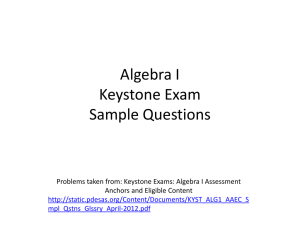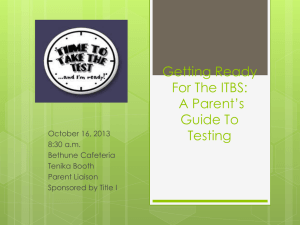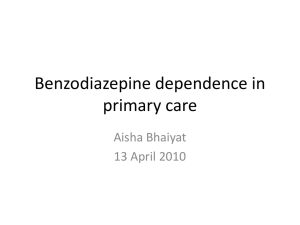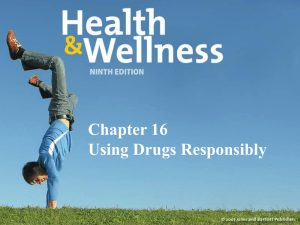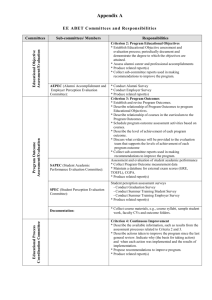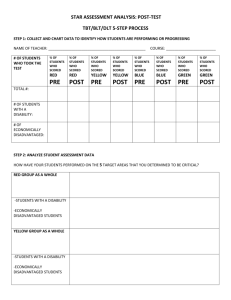Instruction Sheet for the Yale Food Dependence Scale
advertisement
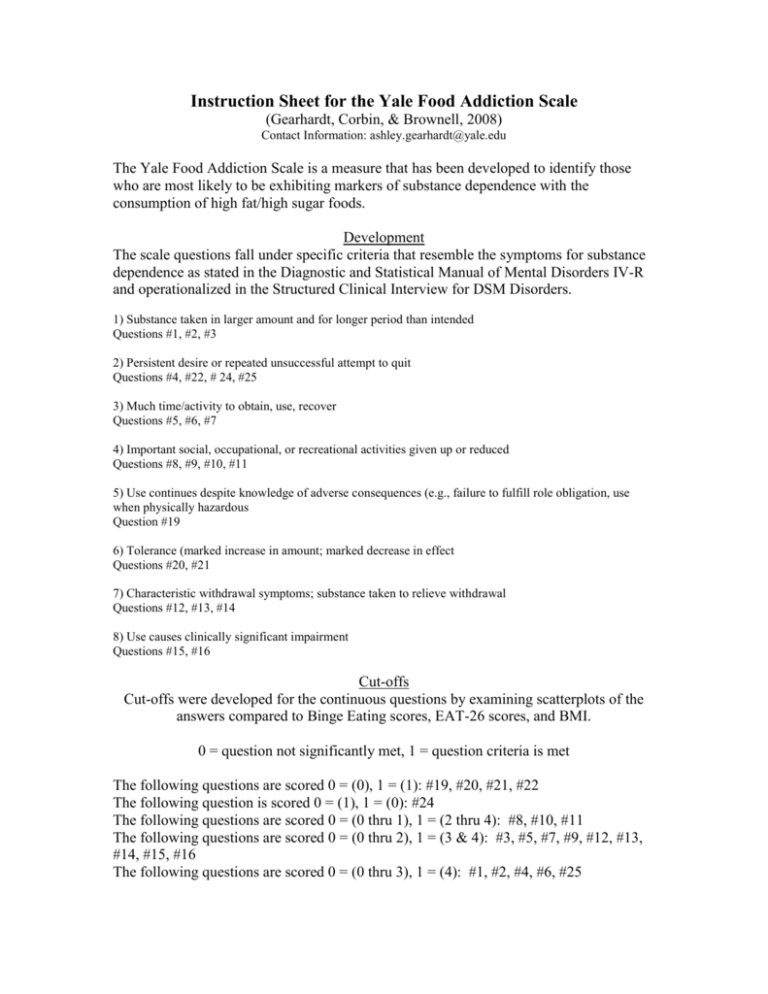
Instruction Sheet for the Yale Food Addiction Scale (Gearhardt, Corbin, & Brownell, 2008) Contact Information: ashley.gearhardt@yale.edu The Yale Food Addiction Scale is a measure that has been developed to identify those who are most likely to be exhibiting markers of substance dependence with the consumption of high fat/high sugar foods. Development The scale questions fall under specific criteria that resemble the symptoms for substance dependence as stated in the Diagnostic and Statistical Manual of Mental Disorders IV-R and operationalized in the Structured Clinical Interview for DSM Disorders. 1) Substance taken in larger amount and for longer period than intended Questions #1, #2, #3 2) Persistent desire or repeated unsuccessful attempt to quit Questions #4, #22, # 24, #25 3) Much time/activity to obtain, use, recover Questions #5, #6, #7 4) Important social, occupational, or recreational activities given up or reduced Questions #8, #9, #10, #11 5) Use continues despite knowledge of adverse consequences (e.g., failure to fulfill role obligation, use when physically hazardous Question #19 6) Tolerance (marked increase in amount; marked decrease in effect Questions #20, #21 7) Characteristic withdrawal symptoms; substance taken to relieve withdrawal Questions #12, #13, #14 8) Use causes clinically significant impairment Questions #15, #16 Cut-offs Cut-offs were developed for the continuous questions by examining scatterplots of the answers compared to Binge Eating scores, EAT-26 scores, and BMI. 0 = question not significantly met, 1 = question criteria is met The following questions are scored 0 = (0), 1 = (1): #19, #20, #21, #22 The following question is scored 0 = (1), 1 = (0): #24 The following questions are scored 0 = (0 thru 1), 1 = (2 thru 4): #8, #10, #11 The following questions are scored 0 = (0 thru 2), 1 = (3 & 4): #3, #5, #7, #9, #12, #13, #14, #15, #16 The following questions are scored 0 = (0 thru 3), 1 = (4): #1, #2, #4, #6, #25 The following questions are NOT scored, but are primers for other questions: #17, #18, #23 Questions #26 & #27 provide information on foods that participants have trouble controlling SCORING After computing cut-offs, sum up the questions under each substance dependence criterion (e.g. Tolerance, Withdrawal, Clinical Significance, etc.). If the score for the criterion is > 1, then the criterion has been met and is scored as 1. If the score = 0, then the criteria has not been met. Example: Tolerance: (#20 =1) + (#21 = 0) = 1, Criterion Met Withdrawal (#12 =0) + (#13 = 0) + (#14 = 0) = 0, Criterion Not Met Given up (#8 =1) + (#9 = 0) + (#10 =1) + (#11 = 1) = 3, Criterion Met and scored as 1 To score the continuous version of the scale, which resembles a symptom count without diagnosis, add up all of the scores for each of the criterion (e.g. Tolerance, Withdrawal, Use Despite Negative Consequence). Do NOT add clinical significance to the score. This should range from 0 to 7 (0 symptoms to 7 symptoms.) To score the dichotomous version, which resembles a diagnosis of substance dependence, compute a variable in which clinical significance must = 1, and the symptom count must be > 3. This should be either a 0 or 1 score (no diagnosis or diagnosis criteria met.) Norms Diagnosis of Food Dependence – 11.6% Median Symptom Count Score – 1.0 Withdrawal – 16.3% Tolerance – 13.5% Continued Use Despite Problems – 28.3% Important Activities Given Up – 10.3% Large Amounts of Time Spent – 24.0% Loss of Control – 21.7% Have Tried Unsuccessfully to Cut Down or Worried About Cutting Down – 71.3% Clinically Significant Impairment - 14%
